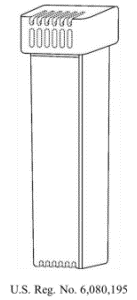The US Court of Appeals for the Ninth Circuit concluded that Section 1051(e) of the Lanham Act permits a plaintiff in a district court case to serve a complaint against a foreign defendant via the Director of the US Patent & Trademark Office (PTO). San Antonio Winery, Inc. v. Jiaxing Micarose Trade Co., Ltd., Case No. 21-56036 (9th Cir. Nov. 14, 2022) (Siler, Callahan, Thomas, JJ.)
San Antonio Winery is a Los Angeles-based winery best known for its Stella Rosa brand of wines. The winery is owned and operated by the Riboli family. San Antonio has registered the trademarks RIBOLI and RIBOLI FAMILY, which it has used since at least 1998 to market its wines and other products.
Jiaxing is a Chinese company that has sold products using the Riboli name. In 2018, Jiaxing registered the mark RIBOLI for use in connection with articles of clothing and shoes. In 2020, Jiaxing applied to register the mark RIBOLI for use with additional types of products, including wine pourers, bottle stands, containers, cocktail shakers, dishware and various other kitchen and household items.
After learning that Jiaxing was using the Riboli name to sell products in the United States, San Antonio filed a complaint asserting Lanham Act claims for trademark infringement, trademark dilution and false designation of origin, as well as related state-law claims. San Antonio also sought an injunction prohibiting Jiaxing from using the RIBOLI mark in connection with its products, an order canceling Jiaxing’s 2018 registration of the RIBOLI mark, and an order either directing Jiaxing to abandon its 2020 application to register RIBOLI for additional uses or prohibiting the PTO from granting the application.
Because Jiaxing is a Chinese company, San Antonio’s service of process was governed by rules for serving parties abroad, such as by the Hague Convention. Concerned with the amount of time it might take to effect service under the Hague Convention, San Antonio instead sought to serve Jiaxing under Section 1051(e) of the Lanham Act, which applies to foreign domiciliaries who apply to register a trademark. Section 1051(e) states that if a trademark applicant is not domiciled in the United States, the applicant may designate the name and address of a person in the United States who may be served with notices or processes in proceedings affecting the mark. If the designated person cannot be found at the address, the notices or processes may be served on the PTO Director.
Seeking to avail itself of Section 1051(e), San Antonio inquired whether the US-based lawyer who had represented Jiaxing in connection with its trademark applications would accept service on Jiaxing’s behalf. When the lawyer did not respond, San Antonio served the district court complaint on the PTO Director, who then sent a letter to Jiaxing confirming service of process was effectuated pursuant to Section 1051(e).
After Jiaxing did not appear to defend itself in the action, San Antonio filed a motion for default judgment. The district court denied the motion on the ground that Jiaxing had not [...]
Continue Reading
read more

 Subscribe
Subscribe



